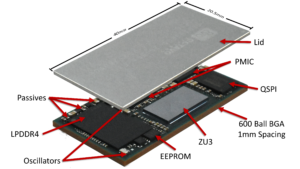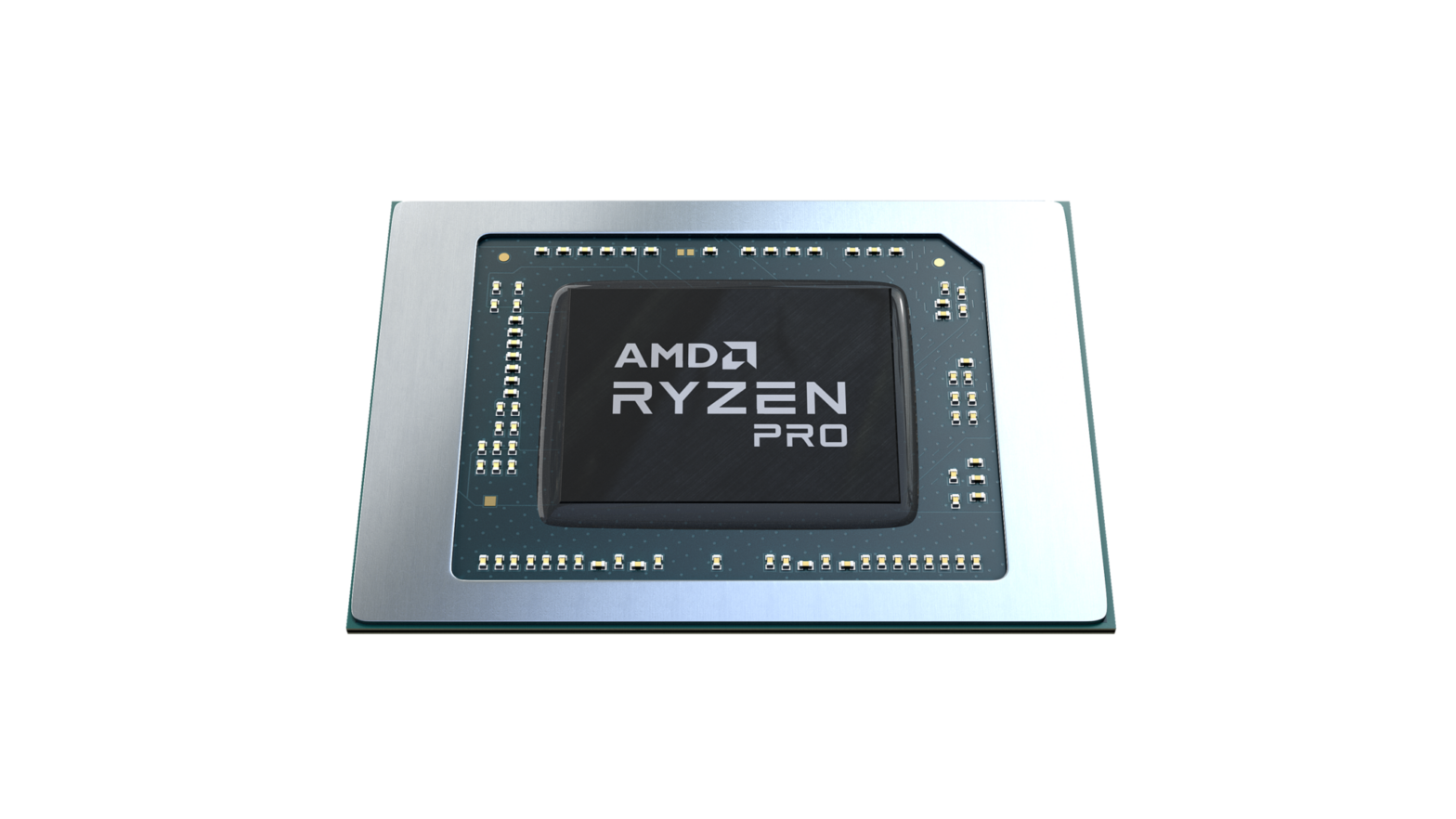Kategorie: News
Hasmukh Ranjan Appointed AMD Chief Information Officer
Fol┬Łlo┬Łwing acqui┬Łsi┬Łti┬Łon of Xilinx, AMD appoints Has┬Łmukh Ran┬Łjan to Seni┬Łor Vice Pre┬Łsi┬Łdent and Chief Infor┬Łma┬Łti┬Łon Officer
SANTA CLARA, Calif., April 18, 2022 (GLOBE NEWSWIRE) ŌĆö AMD (NASDAQ: AMD) today announ┬Łced the appoint┬Łment of Has┬Łmukh Ran┬Łjan to AMD seni┬Łor vice pre┬Łsi┬Łdent and Chief Infor┬Łma┬Łti┬Łon Offi┬Łcer (CIO), effec┬Łti┬Łve imme┬Łdia┬Łte┬Łly. Ran┬Łjan pre┬Łvious┬Łly ser┬Łved as CIO at Xilinx. Ran┬Łjan leads the glo┬Łbal IT orga┬Łniza┬Łti┬Łon, respon┬Łsi┬Łble for pro┬Łvi┬Łding stra┬Łte┬Łgic over┬Łsight of cor┬Łpo┬Łra┬Łte IT infra┬Łstruc┬Łtu┬Łre; main┬Łtai┬Łning cri┬Łti┬Łcal tech┬Łno┬Łlo┬Łgy appli┬Łca┬Łti┬Łons and sys┬Łtems; and deli┬Łve┬Łring advan┬Łced solu┬Łti┬Łons to enable more secu┬Łre and pro┬Łduc┬Łti┬Łve busi┬Łness ope┬Łra┬Łti┬Łons. (ŌĆ”) Wei┬Łter┬Łle┬Łsen ┬╗
AMD to Report Fiscal First Quarter 2022 Financial Results
SANTA CLARA, Calif., April 14, 2022 (GLOBE NEWSWIRE) ŌĆö AMD (NASDAQ: AMD) announ┬Łced today that it will report first quar┬Łter 2022 finan┬Łcial results on Tues┬Łday, May 3, 2022, after the clo┬Łse of mar┬Łket. Manage┬Łment will con┬Łduct a con┬Łfe┬Łrence call to dis┬Łcuss the┬Łse results at 5:00 p.m. EST / 2:00 p.m. PST. Inte┬Łres┬Łted par┬Łties are invi┬Łted to lis┬Łten to the web┬Łcast of the con┬Łfe┬Łrence call via AMDŌĆÖs Inves┬Łtor Rela┬Łti┬Łons web┬Łsite ir.amd.com.
(ŌĆ”) Wei┬Łter┬Łle┬Łsen ┬╗
AMD stellt Ryzen PRO 6000 Mobile Prozessoren vor
Bereits zur CES im Janu┬Łar hat┬Łte AMD die Ryzen 6000 Mobi┬Łle Pro┬Łzes┬Łso┬Łren (ŌĆ£Rem┬ŁbrandtŌĆØ) vor┬Łge┬Łstellt und heu┬Łte fol┬Łgen 8 Model┬Łle der PRO-Vari┬Łan┬Łte f├╝r Busi┬Łness┬Łkun┬Łden. Die┬Łse tei┬Łlen sich auf in drei Model┬Łle der HŌĆæSerie mit einer TDP von 45 Watt, drei der HS-Serie mit 35 Watt und zwei der UŌĆæSerie mit einer TDP von 28 Watt (kon┬Łfi┬Łgu┬Łrier┬Łbar mit 15 bis 30 Watt). Zus├żtz┬Łlich betreibt man noch Pro┬Łdukt┬Łpfle┬Łge und bringt noch drei Ryzen PRO 5000 der UŌĆæSerie, die aller┬Łdings noch einen Vega-Gra┬Łfik┬Łkern besit┬Łzen. (ŌĆ”) Wei┬Łter┬Łle┬Łsen ┬╗
MIT to name Building 12, home of MIT.nano, in honor of Lisa Su
Su is the first MIT alum┬Łna to make a gift for a buil┬Łding that will bear her own name.
MIT Resour┬Łce Deve┬Łlo┬Łp┬Łment ŌĆö April 7, 2022
Buil┬Łding 12, the home of MIT.nano, will soon be named in honor of Lisa T. Su ŌĆÖ90, SM ŌĆÖ91, PhD ŌĆÖ94, chief exe┬Łcu┬Łti┬Łve offi┬Łcer and chair of the Board of Direc┬Łtors of AMD. Su is the first MIT alum┬Łna to make a gift for a buil┬Łding that will bear her own name.
Lisa Su led AMD to its stron┬Łgest per┬Łfor┬Łmance in the companyŌĆÖs more than 50-year histo┬Łry in 2021, brin┬Łging to mar┬Łket seve┬Łral lea┬Łding-edge tech┬Łno┬Łlo┬Łgies. She pre┬Łvious┬Łly ser┬Łved in mul┬Łti┬Łple roles at Frees┬Łca┬Łle Semi┬Łcon┬Łduc┬Łtor Inc., IBM, and Texas Instruments.
Su ear┬Łned bachelorŌĆÖs, masterŌĆÖs, and doc┬Łto┬Łral degrees from MIT in elec┬Łtri┬Łcal engi┬Łnee┬Łring. She has recei┬Łved many honors inclu┬Łding two named for MIT alum┬Łni who were pio┬Łneers in her indus┬Łtry: the Glo┬Łbal Semi┬Łcon┬Łduc┬Łtor AssociationŌĆÖs Dr. Mor┬Łris Chang Exem┬Łpla┬Łry Lea┬Łder┬Łship Award and the Robert N. Noy┬Łce Medal, the hig┬Łhest honor award┬Łed by the Insti┬Łtu┬Łte of Elec┬Łtri┬Łcal and Elec┬Łtro┬Łnics Engi┬Łneers. Su was the first woman ever to recei┬Łve the Noy┬Łce medal. (ŌĆ”) Wei┬Łter┬Łle┬Łsen ┬╗
LibreOffice 7.3.2 (Community)
Libre┬ŁOf┬Łfice ist ein kos┬Łten┬Łlo┬Łses, leis┬Łtungs┬Łstar┬Łkes Office-Paket, und ein Nach┬Łfol┬Łger von OpenOffice(.org). Sei┬Łne kla┬Łre Ober┬Łfl├ż┬Łche und sei┬Łne m├żch┬Łti┬Łgen Werk┬Łzeu┬Łge las┬Łsen Sie Ihre Krea┬Łti┬Łvi┬Łt├żt ent┬Łfal┬Łten und Ihre Pro┬Łduk┬Łti┬Łvi┬Łt├żt stei┬Łgern. Libre┬ŁOf┬Łfice ver┬Łeint meh┬Łre┬Łre Anwen┬Łdun┬Łgen, was es zum ├╝ber┬Łzeu┬Łgends┬Łten frei┬Łen und quell┬Łof┬Łfe┬Łnen Office-Paket auf dem Markt macht: Wri┬Łter, die Text┬Łver┬Łar┬Łbei┬Łtung, Calc die Tabel┬Łlen┬Łkal┬Łku┬Łla┬Łti┬Łon, Impress, das Pr├ż┬Łsen┬Łta┬Łti┬Łons┬Łpro┬Łgramm, Draw das Zei┬Łchen┬Łpro┬Łgramm, Base die Daten┬Łbank┬Łver┬Łwal┬Łtung und Math der For┬Łme┬Łl┬Łedi┬Łtor. (ŌĆ”) Wei┬Łter┬Łle┬Łsen ┬╗
Die neuen Ryzen 5000 sind da
Wie ange┬Łk├╝n┬Łdigt hat AMD gestern eini┬Łge neue Ryzen-5000-Model┬Łle auf den Markt gebracht. Es han┬Łdelt sich dabei nach wie vor um Zen-3-Tech┬Łno┬Łlo┬Łgie in 7 nm, im Prin┬Łzip also um bekann┬Łte Tech┬Łnik. Aller┬Łdings muss┬Łte AMD han┬Łdeln, da man ins┬Łbe┬Łson┬Łde┬Łre im unte┬Łren Markt┬Łseg┬Łment kaum noch kon┬Łkur┬Łrenz┬Łf├ż┬Łhi┬Łge Gegen┬Łspie┬Łler zu den Intel Alder-Lake-Pro┬Łzes┬Łso┬Łren hat┬Łte. (ŌĆ”) Wei┬Łter┬Łle┬Łsen ┬╗
AMD Expands Data Center Solutions Capabilities with Acquisition of Pensando
PensandoŌĆÖs dis┬Łtri┬Łbu┬Łted ser┬Łvices plat┬Łform expands AMD pro┬Łduct port┬Łfo┬Łlio with a high-per┬Łfor┬Łmance packet pro┬Łces┬Łsor and soft┬Łware stack alre┬Ła┬Łdy deploy┬Łed at sca┬Łle across cloud and enter┬Łpri┬Łse cus┬Łto┬Łmers inclu┬Łding Gold┬Łman Sachs, IBM Cloud, Micro┬Łsoft Azu┬Łre and Ora┬Łcle Cloud (ŌĆ”) Wei┬Łter┬Łle┬Łsen ┬╗
IntelŌĆÖs Discrete Mobile Graphics Family Arrives
For deca┬Łdes, Intel has been a cham┬Łpi┬Łon for PC plat┬Łform inno┬Łva┬Łti┬Łon. We have deli┬Łver┬Łed gene┬Łra┬Łti┬Łons of CPUs that pro┬Łvi┬Łde the com┬Łpu┬Łting hor┬Łse┬Łpower for bil┬Łli┬Łons of peo┬Łp┬Łle. We advan┬Łced con┬Łnec┬Łti┬Łvi┬Łty through fea┬Łtures like USB, Thun┬Łder┬ŁboltŌäó and Wi-Fi. And in part┬Łner┬Łship with the PC eco┬Łsys┬Łtem, we deve┬Łlo┬Łped the ground-brea┬Łking PCI archi┬Łtec┬Łtu┬Łre and the Intel┬« EvoŌäó plat┬Łform, pushing the boun┬Łda┬Łry for what mobi┬Łle pro┬Łducts can do.
Intel is uni┬Łque┬Łly posi┬Łtio┬Łned to deli┬Łver PC plat┬Łform inno┬Łva┬Łtions that meet the ever-incre┬Łasing com┬Łpu┬Łting demands of pro┬Łfes┬Łsio┬Łnals, con┬Łsu┬Łmers, gamers and crea┬Łtors around the world. Now, we take the next big step.
Today, we are offi┬Łci┬Łal┬Łly laun┬Łching our Intel┬« ArcŌäó gra┬Łphics fami┬Łly for lap┬Łtops, com┬Łple┬Łting the Intel plat┬Łform. The┬Łse are the first dis┬Łcrete GPUs from our Intel Arc AŌĆæSeries gra┬Łphics port┬Łfo┬Łlio for lap┬Łtops, with our desk┬Łtop and work┬Łsta┬Łtion pro┬Łducts coming later this year. You can visit our News┬Łroom for our launch video, pro┬Łduct details and tech┬Łni┬Łcal demos, but I will sum┬Łma┬Łri┬Łze the high┬Łlights of how our Intel Arc plat┬Łform and AŌĆæSeries mobi┬Łle GPU fami┬Łly will deli┬Łver hard┬Łware, soft┬Łware, ser┬Łvices and ŌĆō ulti┬Łm┬Łate┬Łly ŌĆō high-per┬Łfor┬Łmance gra┬Łphics expe┬Łri┬Łen┬Łces. (ŌĆ”) Wei┬Łter┬Łle┬Łsen ┬╗
Geekbench best├żtigt 1 MB L2-Cache f├╝r Zen 4 ŌĆō Marktstart schon im Sommer?
Vor kur┬Łzem hat AMD mit MilanŌĆæX und dem Desk┬Łtop-Pen┬Łdant Ryzen 7 5800X3D die j├╝ngs┬Łten Aus┬Łbau┬Łstu┬Łfen der Zen-3-Archi┬Łtek┬Łtur vor┬Łge┬Łstellt, die bei┬Łde mit dem sta┬Łcked 3D-V-Cache die letz┬Łten Reser┬Łven aus dem Design her┬Łaus┬Łkit┬Łzeln sol┬Łlen. Am Hori┬Łzont wirft jedoch bereits die kom┬Łmen┬Łde Zen-4-Archi┬Łtek┬Łtur ers┬Łte Schat┬Łten vor┬Łaus. Es gab schon etli┬Łche offi┬Łzi┬Łel┬Łle und inof┬Łfi┬Łzi┬Łel┬Łle Infor┬Łma┬Łtio┬Łnen dazu. (ŌĆ”) Wei┬Łter┬Łle┬Łsen ┬╗
Octavo Systems Announces AMD-Xilinx Zynq UltraScale+ MPSoC System-in-Package
Hous┬Łton, Texas, United Sta┬Łtes (March 24, 2022) ŌĆō Octa┬Łvo Sys┬Łtems, the lea┬Łder in mass mar┬Łket Sys┬Łtem-in-Packa┬Łge (SiP) solu┬Łti┬Łons, today announ┬Łced a new fami┬Łly of SiP devices based on the AMD Xilinx┬« Zynq┬« UltraS┬Łca┬Łle+Ōäó MPSoC Archi┬Łtec┬Łtu┬Łre. The OSDZU3, based on the ZU3, pro┬Łvi┬Łdes the bene┬Łfits of Sys┬Łtem-in-Packa┬Łge while deli┬Łve┬Łring the per┬Łfor┬Łmance and fle┬Łxi┬Łbi┬Łli┬Łty expec┬Łted from the Zynq UltraS┬Łca┬Łle+ architecture.
The OSDZU3 lever┬Ła┬Łges Inte┬Łgra┬Łted Cir┬Łcuit manu┬Łfac┬Łtu┬Łring tech┬Łno┬Łlo┬Łgy to integrate:
|
 |
(ŌĆ”) Wei┬Łter┬Łle┬Łsen ┬╗
MSI AMD 500ŌĆæ, 400- and 300-series Motherboards Are Ready to Optimize the Latest RyzenŌäó 5000 & 4000 Series Processors
[Tai┬Łpei, Tai┬Łwan] AMD recent┬Łly announ┬Łced the latest ŌĆ£Zen 3ŌĆØ and ŌĆ£Zen 2ŌĆØ new pro┬Łces┬Łsors are coming to the mar┬Łket very soon for DIY users, which includes the ground-brea┬Łking AMD 3D VŌĆæCache tech┬Łno┬Łlo┬Łgy pro┬Łces┬Łsor, the AMD RyzenŌäó 7 5800X3D. Moreo┬Łver, the main┬Łstream RyzenŌäó 7 5700X, RyzenŌäó 5 5600, RyzenŌäó 5 5500, RyzenŌäó 5 4600G, RyzenŌäó 5 (ŌĆ”) Wei┬Łter┬Łle┬Łsen ┬╗
ASUS Server jetzt mit AMD Instinct MI210 Accelerator erh├żltlich ŌĆō Ausgestattet mit Technologien der Exascale-Klasse
ESC8000A-E11 und ESC4000-E11 Ser┬Łver mit dem spe┬Łzi┬Łell ent┬Łwi┬Łckel┬Łten Beschleu┬Łni┬Łger lie┬Łfern her┬Łaus┬Łra┬Łgen┬Łde Leis┬Łtung bei ver┬Łschie┬Łde┬Łnen Workloads in Rechen┬Łzen┬Łtren und dar┬Ł├╝ber hinaus
- Bereit f├╝r AMD Instinct MI210: ESC8000A-E11 und ESC4000A-E11 sind zer┬Łti┬Łfi┬Łzier┬Łte Ser┬Łver f├╝r den neu┬Łes┬Łten Beschleuniger
- Acht oder vier GPUs: Fle┬Łxi┬Łble Kon┬Łfi┬Łgu┬Łra┬Łtio┬Łnen, bereit f├╝r die stei┬Łgen┬Łden Anfor┬Łde┬Łrun┬Łgen von KIŌĆæ, Ren┬Łde┬Łring- und Virtualisierungsanwendungen
- Fort┬Łschritt┬Łli┬Łches GPU-Ser┬Łver-Design: Das zukunfts┬Łwei┬Łsen┬Łde K├╝hl┬Łsys┬Łtem des ESC8000A-E11 senkt Kos┬Łten und Stromverbrauch
Ratin┬Łgen, Deutsch┬Łland, 22. M├żrz 2022 ŌĆö ASUS, das f├╝h┬Łren┬Łde IT-Unter┬Łneh┬Łmen f├╝r Ser┬Łver┬Łsys┬Łte┬Łme, Ser┬Łver-Main┬Łboards und Work┬Łsta┬Łtions, k├╝n┬Łdigt heu┬Łte an, dass die ASUS ESC80000A-E11 und ESC4000A-E11 GPU-Ser┬Łver den neu┬Łes┬Łten AMD InstinctŌäó MI210-Beschleu┬Łni┬Łger unter┬Łst├╝t┬Łzen und die Wis┬Łsen┬Łschaft in die Lage ver┬Łset┬Łzen, die drin┬Łgends┬Łten Her┬Łaus┬Łfor┬Łde┬Łrun┬Łgen der Mensch┬Łheit anzu┬Łge┬Łhen ŌĆō vom Kli┬Łma┬Łwan┬Łdel bis zur Impfstoffforschung.
Mit den neu┬Łes┬Łten AMD EPYCŌäó Pro┬Łzes┬Łso┬Łren der 3. Gene┬Łra┬Łti┬Łon und den AMD Instinct MI210 (PCIe┬«) Beschleu┬Łni┬Łger┬Łkar┬Łten sind die ESC8000A-E11 und ESC4000A-E11 Ser┬Łver in der Lage, das gesam┬Łte Spek┬Łtrum der AMD Ser┬Łver┬Łtech┬Łno┬Łlo┬Łgien zu nut┬Łzen, um Spit┬Łzen┬Łleis┬Łtun┬Łgen f├╝r KI- und Simu┬Łla┬Łti┬Łons┬Łwor┬Łkloads vom Edge bis zum Rechen┬Łzen┬Łtrum und der Cloud zu liefern.
Das fortschrittliche ASUS GPU-Server-Design bietet Wettbewerbsvorteile
Der ESC8000A-E11 im 4HE-Geh├żu┬Łse ist ein Dual-Socket-Ser┬Łver, der auf den neu┬Łes┬Łten AMD EPYC-Pro┬Łzes┬Łso┬Łren der 3. Gene┬Łra┬Łti┬Łon basiert und bis zu acht AMD Instinct MI210-Beschleu┬Łni┬Łger unter┬Łst├╝tzt, was ihn ide┬Łal f├╝r die Opti┬Łmie┬Łrung von KI-Trai┬ŁningsŌĆæ, Ana┬Łly┬Łse- und Machi┬Łne-Lear┬Łning-Workloads macht. Dar┬Ł├╝ber hin┬Łaus erm├Čg┬Łlicht das fort┬Łschritt┬Łli┬Łche W├żr┬Łme- und K├╝h┬Łlungs┬Łde┬Łsign mit unab┬Łh├żn┬Łgi┬Łgen Luft┬Łstrom┬Łka┬Łn├ż┬Łlen f├╝r CPU und GPU eine ├żu├¤erst effi┬Łzi┬Łen┬Łte W├żr┬Łme┬Łab┬Łlei┬Łtung. Zu den markt┬Łf├╝h┬Łren┬Łden Merk┬Łma┬Łlen geh├Črt die Unter┬Łst├╝t┬Łzung von bis zu vier red┬Łun┬Łdan┬Łten 3000 W 80 PLUS┬« Tita┬Łni┬Łum-Netz┬Łtei┬Łlen. Die┬Łse Kon┬Łfi┬Łgu┬Łra┬Łti┬Łon bie┬Łtet einen Wir┬Łkungs┬Łgrad von bis zu 96 % und stellt sicher, dass das Sys┬Łtem von allen Netz┬Łtei┬Łlen gleich┬Łm├ż┬Ł├¤ig mit Strom ver┬Łsorgt wird ŌĆō das maxi┬Łmiert die Effi┬Łzi┬Łenz und gew├żhr┬Łleis┬Łtet einen unter┬Łbre┬Łchungs┬Łfrei┬Łen Betrieb.
ŌĆ£ASUS arbei┬Łtet seit lan┬Łgem mit AMD zusam┬Łmen, um anwen┬Łdungs┬Łop┬Łti┬Łmier┬Łte Ser┬Łver┬Łl├Č┬Łsun┬Łgen f├╝r unter┬Łschied┬Łli┬Łche Workloads zu erm├Čg┬Łli┬Łchen. Unser inno┬Łva┬Łti┬Łves GPU-Ser┬Łver┬Łde┬Łsign ver┬Łschafft uns einen Wett┬Łbe┬Łwerbs┬Łvor┬Łteil auf dem Markt und gibt unse┬Łren Kun┬Łden die M├Čg┬Łlich┬Łkeit, kom┬Łple┬Łxe Her┬Łaus┬Łfor┬Łde┬Łrun┬Łgen viel schnel┬Łler als bis┬Łher zu l├ČsenŌĆØ, sagt Robert Chin, Gene┬Łral Mana┬Łger der ASUS Ser┬Łver and Work┬Łsta┬Łtion Busi┬Łness Unit. ŌĆ£Wir wer┬Łden kon┬Łti┬Łnu┬Łier┬Łlich wei┬Łte┬Łre Ser┬Łver mit den fort┬Łschritt┬Łli┬Łchen Inno┬Łva┬Łtio┬Łnen von AMD auf den Markt brin┬Łgen, um die Ent┬Łwick┬Łlun┬Łgen in den Berei┬Łchen HPC und KI zu beschleunigen.ŌĆØ
ASUS bie┬Łtet au├¤er┬Łdem den ESC4000A-E11 im 2HE-Geh├żu┬Łse an, einen Sin┬Łgle-Socket-Ser┬Łver, der sich f├╝r den Ein┬Łsatz moder┬Łner KI-Trai┬Łnings┬Łclus┬Łter im gro┬Ł├¤en Ma├¤┬Łstab eig┬Łnet und bis zu vier AMD Instinct MI210 Beschleu┬Łni┬Łger unter┬Łst├╝tzt. Sein fle┬Łxi┬Łbles Design erm├Čg┬Łlicht GrafikŌĆæ, Netz┬Łwerk- und Spei┬Łcher┬Łer┬Łwei┬Łte┬Łrun┬Łgen und Hard┬Łware-Upgrades, ein┬Łschlie├¤┬Łlich der M├Čg┬Łlich┬Łkeit von bis zu elf PCIe 4.0ŌĆæSteckpl├żtzen f├╝r eine viel┬Łf├żl┬Łti┬Łge Anwen┬Łdung, sowie ein leicht zug├żng┬Łli┬Łches Front┬Łpa┬Łnel-Design, das vier NVMe-SSD-Lauf┬Łwer┬Łke und eine optio┬Łna┬Łle Aus┬Łwahl an OCP 3.0, einen ASUS Hyper M.2ŌĆæAdapter oder eine HBA/RAID-Kar┬Łte ├╝ber einen PCIe 4.0ŌĆæSteckplatz bie┬Łtet. (ŌĆ”) Wei┬Łter┬Łle┬Łsen ┬╗
AMD InstinctŌäó Expands Ecosystem and Delivers Exascale-Class Technology for HPC and AI Applications
ŌĆō Powered by AMD CDNAŌäó 2 archi┬Łtec┬Łtu┬Łre and AMD ROCmŌäó5, new AMD Instinct MI210 GPUs acce┬Łle┬Łra┬Łting insights and dis┬Łco┬Łvery for main┬Łstream users ŌĆō
SANTA CLARA, Calif., March 22, 2022 (GLOBE NEWSWIRE) ŌĆö AMD (NASDAQ: AMD) today announ┬Łced the avai┬Łla┬Łbi┬Łli┬Łty of the AMD InstinctŌäó eco┬Łsys┬Łtem with expan┬Łded sys┬Łtem sup┬Łport from part┬Łners inclu┬Łding ASUS, Dell Tech┬Łno┬Łlo┬Łgies, Giga┬Łbyte, HPE, Leno┬Łvo and Super┬Łmi┬Łcro, the new AMD InstinctŌäó MI210 acce┬Łle┬Łra┬Łtor and the robust capa┬Łbi┬Łli┬Łties of ROCmŌäó 5 soft┬Łware. Altog┬Łe┬Łther, the AMD Instinct and ROCm eco┬Łsys┬Łtem is offe┬Łring exas┬Łca┬Łle-class tech┬Łno┬Łlo┬Łgy to a broad base of HPC and AI cus┬Łto┬Łmers, addres┬Łsing the gro┬Łwing demand for com┬Łpu┬Łte-acce┬Łle┬Łra┬Łted data cen┬Łter workloads and redu┬Łcing the time to insights and discovery.
ŌĆ£With twice the plat┬Łforms available com┬Łpared to our pre┬Łvious gene┬Łra┬Łti┬Łon acce┬Łle┬Łra┬Łtors, gro┬Łwing cus┬Łto┬Łmer adop┬Łti┬Łon across HPC and AI appli┬Łca┬Łti┬Łons, and new sup┬Łport from com┬Łmer┬Łcial ISVs in key workloads, weŌĆÖre con┬Łti┬Łnuing to dri┬Łve adop┬Łti┬Łon of the AMD Instinct MI200 acce┬Łle┬Łra┬Łtors and ROCm 5 soft┬Łware eco┬Łsys┬Łtem,ŌĆØ said Brad McCre┬Łdie, cor┬Łpo┬Łra┬Łte vice pre┬Łsi┬Łdent, Data Cen┬Łter GPU and Acce┬Łle┬Łra┬Łted Pro┬Łces┬Łsing, AMD. ŌĆ£Now with the avai┬Łla┬Łbi┬Łli┬Łty of the AMD Instinct MI210 acce┬Łle┬Łra┬Łtor to the MI200 fami┬Łly, our cus┬Łto┬Łmers can choo┬Łse the acce┬Łle┬Łra┬Łtor that works best for their workloads, whe┬Łther they need lea┬Łding-edge acce┬Łle┬Łra┬Łted pro┬Łces┬Łsing for lar┬Łge sca┬Łle HPC and AI workloads, or if they want access to exas┬Łca┬Łle-class tech┬Łno┬Łlo┬Łgy in a com┬Łmer┬Łcial for┬Łmat.ŌĆØ (ŌĆ”) Wei┬Łter┬Łle┬Łsen ┬╗
Ansys Collaborates with Microsoft to Drive Innovation Forward with Chip Development, Simulation, and Cloud Computing
3rd Gen AMD EPYCŌäó pro┬Łces┬Łsors with AMD 3D VŌĆæCacheŌäó tech┬Łno┬Łlo┬Łgy ŌĆö available on Micro┬Łsoft Azu┬Łre HBv3 vir┬Łtu┬Łal machi┬Łnes (VMs) ŌĆö will be offe┬Łred to Ansys Cloud cus┬Łto┬Łmers in 2022
- Ansys Cloud will auto┬Łma┬Łti┬Łcal┬Łly upgrade to offer the AMD EPYC 7003 Series pro┬Łces┬Łsors with AMD 3D VŌĆæCache tech┬Łno┬Łlo┬Łgy today
- 3rd Gen AMD EPYC pro┬Łces┬Łsors with AMD 3D VŌĆæCache use 3D stack┬Łing tech┬Łno┬Łlo┬Łgy to pro┬Łvi┬Łde fan┬Łta┬Łstic per┬Łfor┬Łmance for tech┬Łni┬Łcal com┬Łpu┬Łting workloads
PITTSBURGH, March 21, 2022 ŌĆö Ansys (NASDAQ: ANSS) cus┬Łto┬Łmers will have auto┬Łma┬Łtic cloud access to the latest 3rd Gen AMD EPYC pro┬Łces┬Łsors with AMD 3D VŌĆæCache tech┬Łno┬Łlo┬Łgy, available on Micro┬Łsoft Azu┬Łre HBv3 VMs. Ansys Cloud, the mana┬Łged cloud ser┬Łvice pro┬Łvi┬Łded by Ansys and enab┬Łled on Azu┬Łre, will auto┬Łma┬Łti┬Łcal┬Łly upgrade to offer the abili┬Łty to use the latest AMD chips today.
Desi┬Łgned spe┬Łci┬Łfi┬Łcal┬Łly to acce┬Łle┬Łra┬Łte com┬Łpu┬Łter-aided engi┬Łnee┬Łring (CAE) work┬Łflows, the new Azu┬Łre HBv3 VMs with 3rd Gen AMD EPYC pro┬Łces┬Łsors with AMD 3D VŌĆæCache tech┬Łno┬Łlo┬Łgy pro┬Łdu┬Łce unpre┬Łce┬Łden┬Łted per┬Łfor┬Łmance boosts for tech┬Łni┬Łcal com┬Łpu┬Łting workloads. In ear┬Łly test┬Łing by Azu┬Łre, the com┬Łpa┬Łny saw up to 80% impro┬Łve┬Łment in lar┬Łge-sca┬Łle com┬Łpu┬Łta┬Łtio┬Łnal flu┬Łid dyna┬Łmics (CFD) simu┬Łla┬Łti┬Łons and up to 50% impro┬Łve┬Łment in expli┬Łcit fini┬Łte ele┬Łment ana┬Łly┬Łsis (FEA) crash tests. This means that Ansys Cloud cus┬Łto┬Łmers can sol┬Łve CAE pro┬Łblems much fas┬Łter, lea┬Łding to bet┬Łter design decis┬Łi┬Łons in a shorter amount of time. (ŌĆ”) Wei┬Łter┬Łle┬Łsen ┬╗




